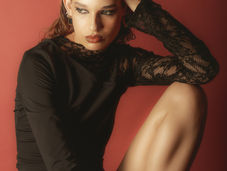Seeing What London Artists Are Up To At The Artists' Fair 2025
- Oisín McGilloway
- Aug 5
- 4 min read
Updated: Aug 6

On a rainy weekend in June, I trekked to central London to visit Somerset House Studios, who were hosting The Artists’ Fair 2025. Here is what I found:
For the third year in a row, artists from around London descended on Somerset House Studios earlier last month to share what they’re working on right now, as well as talk about how art is changing in the current economic and political climate.
Trying to get to this year’s Artists’ Fair hosted by Somerset House Studios was difficult enough; situated down long, winding, quiet corridors, the artists, raring to show off their work and talk about their experiences creating for a living, were just a low-hum to tourists and other passersby admiring the grandeur of the building’s facades. While the Fair itself was a vibrant, welcoming celebration of art in all its shapes and colours, there was a sense of pride for art and for artists; they weren’t just there to show off their work, but to show up for their profession.

The fruits of this labour are twofold; not only do the bright colours and thought-provoking motifs of these artists’ work break through the financial and social setbacks that their creators face, but also lay down a slightly less rocky path than cold political activism for them to walk along to reach prosperity. John Costi’s playful, Kafka-esque (to use the term correctly), printed t-shirts, splashed with a scattered pattern of bailing documents from deep inside HMP bureaucracy, tell a story of freedom, the prison context (both literally and bureaucratically) paired with the emancipatory mobility of clothing—think Girls On Tops, but for incarceration.
T-shirts seemed to be the articles in focus at the fair, with Everpress providing clothing printed with many of the artists’ work, all of which symbolised this mobility in their own way. Similarly, Montez Press brought their Interjection Calendars to tell stories of oppression, of imprisonment of varying scales, in pocket-sized booklets almost entirely free of form.
Elsewhere, boundaries were broken in other ways, such as in the crossmedial work of Sian Fan. Questioning divisions between video games and art, and between art and the real world, her work breaks down representations of Asiatic people in media, in the “thresholds of human identity where one exists as both and neither at the same time. This interdisciplinary work is coupled with the “anti-disciplinary” work of artists like Vivienne Griffin, who, through “reclaiming the emancipatory prompts that technology can offer us,” experiments with image and vocal processing, as well as live performances and installations.

Of course, there’s still the practical issue of visibility—this is all still happening in the tucked away studios in Somerset House. That’s where Spaghetti Club comes in; the after-school art club at Grasmere Primary School in east London initially gained recognition when works from their children were put in Harlesden High Street gallery by curatorial duo 650mAh (founded and run by Ella Fleck and Tabitha Steinberg). With this exhibition, the duo were responding to a need they felt was present in contemporary art criticism for “unabashed honesty”, which the children brought in bucketloads to an afternoon of creating and responding to art at Somerset House Studios. The result was not only an exercise in creating the artists of tomorrow, but also in the deep, psychic formlessness that goes into creating art, for which maturity is no guarantee of quality (quite literally; one child’s response to a photo of a young John Travolta being “happy,” while an older, balder, bearded Travolta is apparently sad, speaking volumes to the beauty standards of Hollywood that one can assume this primary schooler is blissfully unaware of).

Now I know what you’re likely thinking: it’s still a market. There’s still an element of structure that these artists rely on in order to make money; wouldn’t it be a bit rich to turn on that? The answer to this question (no, obviously) came on the Saturday of the fair, on which a talk was held discussing the experience of housing for artists. Many anecdotes were told, some with happy endings, some without, but the message was always the same: the housing market is precarious for all of us, and when artists choose to devote their life to speaking out against this, they sacrifice any sort of housing security at all. The vicious cycle repeats; the more they speak out, the worse the problem gets. This goes in the other direction, too; the more attention and success someone gets for speaking out, the more susceptible they are to falling victim to the very organisation they speak out against (the Fair took place soon after Mubi received a $100 million investment from Sequoia Capital, a venture capital company that backs multiple Israeli defence start-ups—a fact that a lot of artists and filmmakers have not taken kindly to).
Between these two extremes, of course, there is a middle ground. From boycotting in the above case, to charity support from LUX and legal support from The Design and Artists Copyright Society (DACS), the fight is rarely for an end, but for a middle ground. The same way the artists played with boundaries of freedom and control, gender identity, maturity and media, their work keeps the mind happy and healthy in a world being increasingly pushed to extremes.
Until next year!
To keep up to date with what's happening at Somerset House Studios, visit their website or follow them on Instagram.
























Comments